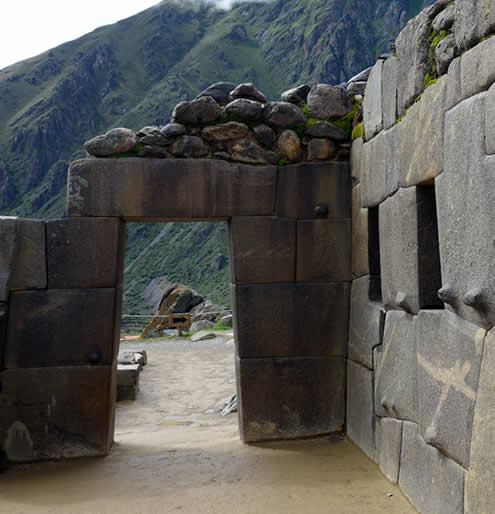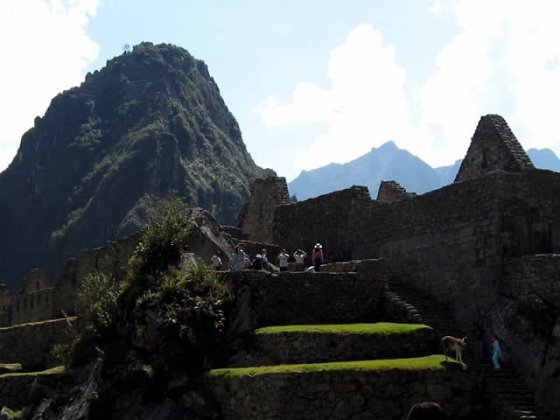Cusco
Cusco is the historic capital of Peru and was founded by Inca Manco Cápac in the 11th or 12th century AD. It was the administrative and religious center of the Inca Empire and covered an enormous region, which included large parts of what is now Ecuador, Colombia, Peru, Bolivia, Argentina and Chile.
On the 23rd of March in 1534 Francisco Pizarro founded a Spanish city essentially on top of the city of Cusco using the Incan structures as the foundations for Spanish buildings. With its architectural monuments and invaluable works of art Cusco is a classic example of cultural fusion and syncretism.
Incan society was a remarkable example of socio-political organization with a mastery of architecture, hydraulic engineering, medicine, and agriculture.
Cusco was declared a “World Heritage Site” by UNESCO in 1983. It is situated at 3400 MASL and posses a mild and dry climate with an average temperature of 11 ºC (maximum 17 ºC and a minimum of -2ºC). April through October are considered the summer months (Andean summer) and the rainy season lasts from November to March.
There are three ways to travel to Cusco, by land Lima – Arequipa – Cusco, which is a 1494 km trip, via the multiple daily one-hour flights from Lima, and the recently reinstated train service from Puno, Juliaca, or Arequipa. The distance between Arequipa and Cusco is 735 Km.
There are many famous tourist sites in and around the city of Cusco. Here are some of the most popular: The Plaza de Armas; the Cusco Catherdral, which was built upon the site of the Suntur Wasi Temple (House of God); the artist’s neighborhood of San Blas, Koricancha (the Golden Enclosure), which was the most important religious structure for the Incas and dedicated to the cult of the sun; the extraordinary Sacsaywaman, which is a megalithic fortress dating to the Incas with three stacked walls stretching 360m in width; Kenko; Puca Pucará; Tambomachay; etc.
Among the most important places around Cusco are:

- Koricancha
Koricancha a.k.a., the Temple of the Sun, was one of the most venerated sacred enclosures of the Inca Empire and a place where they worshipped their principle deity, El Inti (the sun). Garcilaso de la Vega and Cieza de León both described it as a temple with walls covered in sheets of gold, decorated on the inside with images of the principle Inca deities, and with actual sized statues of plants and animals fashioned in gold and silver.
Although the exact time of its initial construction remains unknown, it is presumable that this construction dates back to the time of the Ayamarcas and that the Inca Pachacutec took it upon himself to reconstruct it after his victory over the Chancas in 1438.
This construction demonstrates the high level of engineering achieved by the Incas; its walls were built from large blocks of solid rock, even bigger than the ones found at Machu Picchu, and fit into place with absolute precision.
In 1533 Koricancha was looted by the Spanish, who removed all the deities and sacred images that once adorned the temple. After the invasion, upon the foundations of Koricancha, the Temple of Santo Domingo was built. To this day you can still observe parts of the old temple beneath the church.
- Sacsaywaman
Sacsaywaman is the most important fortress built by the Incas, whose purpose was to protect Cusco, the capital city of Tahuantinsuyo (the Inca Empire). Its construction began during the government of the Inca Pachacutec and was completed in the times of Huayna Cápac in the 16th century. It has been estimated that the work required the labor of 20,000 people for 70 years, extracting and moving the enormous rocks required for the building of the fortress.
Sacsaywaman is set on the top of a hill, which dominates the northern part of the city of Cusco. Its walls were built upon a foundation of huge stone blocks some of which stand nine meters tall, five meters wide and, four meters in depth. In some cases these blocks weigh between 90 and 125 tons. This structure is yet another example of the high level of engineering attained by the Inca Empire.
This site would also have been the most important temple of Hanan Qosqo (Upper Cusco), where the sun, the moon, stars, lightning, and other Inca divinities were honored.
The fortress of Sacsaywaman is also the stage for the Inti Raymi celebrations (festival of the sun), Peru’s most important ancestral holiday, which honors the sun god, and takes place every 24th of June.
- Machu Picchu
This Stone city was built in the middle of the 15th century and is located 112 km from Cusco. It was made known to the world by the North American explorer Hiram Bingham in 1911. Machu Picchu was built on a heavily vegetated ridge between two mountains, Machu Picchu (old mountain) and Huayna Picchu (young mountain). The ridge upon which the ruins are perched is skirted by the Urubamba River (a.k.a. Vilcanota River), which lies in a region of montane rainforest with abundant flora and fauna.
It is one of the most popular tourist destinations on the planet, because it is considered a masterpiece of both archeology and engineering at the same time, it includes military-type constructions, plazas, temples and platforms.
Machu Picchu was declared a World Heritage Site by UNESCO in 1983. On July 7, 2007 Machu Picchu was chosen as one of the new wonders of the world at a ceremony held in Lisbon, Portugal.
- The Inca Trail
This is a system of footpaths that was constructed in the time of the Inca Empire and made using slabs of carved granite, which are found along the route. Several ruins with different construction styles lie along the path giving exquisite views of the valleys below perfectly complementing the trek. The region is rich with nature, beautiful landscapes, hundreds of species of orchids, and colorful birds. Walkers of this ancient trail eventually arrive at Machu Picchu, the lost city of the Incas.
- The Sacred Valley of the Incas
One of the most impressive tourist destinations in Peru, the Sacred Valley is formed by a series of rivers that descend from the high valleys and ravines. The valley contains a large number of archeological sites and traditional towns. The Sacred Valley was highly esteemed by the Incas owing to its special geographic and climactic qualities. It was also one of their most important centers of agriculture.
Among the most impressive Inca sites in the valley are: Pisac, Ollantaytambo, Maras, Chincheros, etc.



